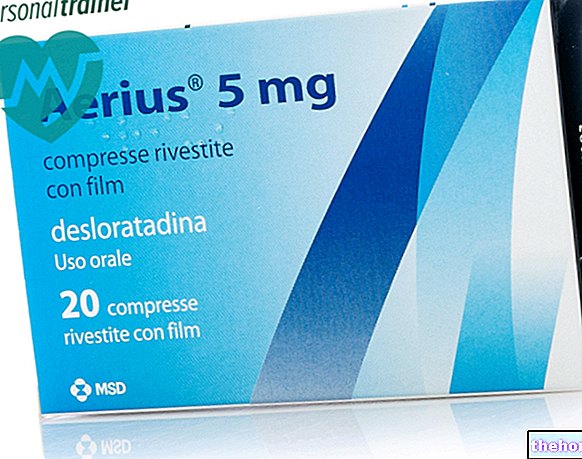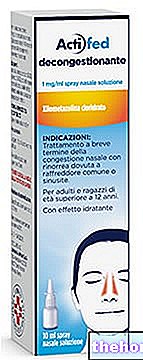Active ingredients: Parnaparin (Parnaparin sodium)
FLUXUM 3,200 IU AXA solution for injection for subcutaneous use
FLUXUM 4.250 IU AXA solution for injection for subcutaneous use
FLUXUM 6,400 IU AXA solution for injection for subcutaneous use
FLUXUM 8,500 IU AXA solution for injection for subcutaneous use
FLUXUM 12,800 IU AXA solution for injection for subcutaneous use
Indications Why is Fluxum used? What is it for?
Fluxum contains the active substance parnaparin sodium. Parnaparin sodium is a substance that belongs to the class of anticoagulants, medicines used to treat blood clots in blood vessels and prevent them from forming.
Fluxum is used:
- to prevent blood clots from forming in blood vessels (deep vein thrombosis) in patients undergoing general and orthopedic surgery and in patients at increased risk of developing deep vein thrombosis;
- to treat patients who have blood clots in blood vessels (deep vein thrombosis).
Contraindications When Fluxum should not be used
DO NOT use Fluxum
- if you are allergic to parnaparin sodium or other low molecular weight heparins or to heparin or substances of porcine origin or to any of the other ingredients of this medicine
- if you have to undergo local or regional anesthesia for surgery and heparin is not given for prevention;
- if you have had thrombocytopenia (low blood platelet count) due to the administration of Fluxum (see also "Warnings and precautions");
- if you have blood clotting problems;
- if you have any condition that leads to excessive bleeding eg. peptic ulcer, eye diseases called retinopathies, hemorrhagic syndrome;
- if you have a condition known as acute infective endocarditis (inflammation of the membrane covering the heart and heart valves caused by an 'infection), unless an artificial valve is involved;
- if you have or have had bleeding in the blood vessels of the brain;
- if you have or have ever had a dilation of a vessel in the brain (brain aneurysm);
- if you have high blood pressure that is difficult to control (hypertension);
- if you have severe kidney and pancreas disease, very high blood pressure, severe brain trauma (cranioencephalic trauma) in the post-operative period;
- if you are taking other medicines against blood clot formation (vitamin K antagonists), medicines that reduce the clumping of platelets in the blood (antiplatelet agents) eg ticlopidine, salicylates or NSAIDs, dipyridamole, sulfinpyrazone.
Precautions for use What you need to know before taking Fluxum
Talk to your doctor or pharmacist before using Fluxum.
Fluxum must not be administered intramuscularly.
Take special care with Fluxum
- if you suffer from thrombocytopenia due to heparin, a condition in which the number of clotting cells (platelets) is low and bruising and bleeding easily appear.
Thrombocytopenia is a known complication of heparin therapy and can appear 4 to 10 days after starting treatment, but also earlier in patients who have had thrombocytopenia due to heparin in the past.
A mild form of thrombocytopenia may occur, which may remain stable or regress even with continued treatment.
In some cases, however, a more severe form of thrombocytopenia may occur which can lead to the formation of new blood clots with serious complications, such as death of skin cells (necrosis of the skin), obstruction of an "artery in the extremities or lungs, heart attack, stroke, and sometimes death.
In these cases, your doctor will decide whether to stop the heparin therapy and give you a different anticoagulant.
Your doctor will prescribe frequent blood checks to assess the number of platelets: before treatment and then twice a week for the first month in case of prolonged administration.
- if you are going to have surgery (spinal or epidural anesthesia, epidural analgesia or lumbar puncture) please tell your doctor that you are using Fluxum. Particularly:
- if you are an elderly patient
- if you have blood clotting problems
- if you are using anti-inflammatory, antiplatelet and anticoagulant medicines (see section "Other medicines and Fluxum")
- if you have suffered repeated spinal injuries or punctures.
- if you have conditions that can easily cause bleeding and in particular if you have:
- a low number of platelets in the blood (thrombocytopenia) and changes in platelets
- severe liver disease (liver failure)
- severe kidney disease (kidney failure)
- high blood pressure and difficult to control
- eye disease due to high blood pressure or diabetes (hypertensive or diabetic retinopathy)
- underwent recent surgery and is using high doses of Fluxum
- other conditions with a high risk of bleeding.
- if laboratory tests have shown a high level of potassium in the blood, because heparin can block the release of a hormone called aldosterone causing an increase in potassium levels in the blood. This occurs particularly in patients with diabetes, diseases of the kidneys (chronic renal failure), excessive production of metabolic acids (metabolic acidosis), already having high levels of potassium in the blood or taking medicines that reduce the elimination of potassium in the urine (potassium-sparing diuretics).
The risk of a rise in potassium levels increases with the duration of therapy, but is usually temporary.
If you are an at risk patient, your doctor will order you to check your blood potassium levels before starting heparin therapy. In case of treatment lasting more than 7 days, your doctor will have you have regular check-ups.
- if you suffer from liver disease (liver failure)
- if you suffer from kidney disease (kidney failure)
- if you have high blood pressure
- if you have ever had a stomach ulcer or other injury that could bleed
- if you suffer from eye problems due to vascular causes (vascular diseases of the chorionic retina)
- if you have recently had brain or spinal cord surgery.
Interchangeability with other anticoagulants
Do not replace parnaparin sodium with other medicines with similar action (unfractionated heparins, other low molecular weight or synthetic molecule heparins), as these medicines are different from each other, including in terms of efficacy and safety. Each of these medicines has its own specific instructions and conditions for use, so it is recommended not to switch between brands during treatment.
Interactions Which drugs or foods can modify the effect of Fluxum
Tell your doctor or pharmacist if you are taking, have recently taken or might take any other medicines. Tell your doctor if you are using:
- medicines that affect blood clotting processes (haemostatic function) because they can increase the risk of bleeding. Eg
- medicines that inhibit platelet function and glycoprotein IIb / IIIa receptor antagonists
- non-steroidal anti-inflammatory drugs (NSAIDs) - medicines that reduce blood clotting time (anticoagulants: vitamin K antagonists) taken by mouth
- medicines used to dissolve blood clots in blood vessels (thrombolytics)
- dextran (medicine used for example to increase blood volume or to reduce blood clotting)
- non-steroidal anti-inflammatory drugs (NSAIDs) or high doses of acetylsalicylic acid (ASA), particularly if you have kidney disease (kidney failure) as these drugs reduce urine production;
- medicines for heart problems, for example
- nitroglycerin
- sulfinpyrazone
- ethacrynic acid
- digital and other digitalis
- antibiotics such as tetracyclines and penicillin (when given by injection into a vein or taken in high doses);
- medicines to decrease uric acid, eg probenecid;
- anti-cancer medicines (cytostatic agents);
- allergy medicines (antihistamines);
- medicines for malaria (quinine);
- phenothiazines (psychotropic drugs);
- ascorbic acid (vitamin C);
- tobacco.
You should not take the following medicines concomitantly with Fluxum unless under close medical supervision, as co-administration may increase the risk of bleeding:
- acetylsalicylic acid and other salicylates. You use other medicines to reduce pain and lower fever;
- non-steroidal anti-inflammatory drugs (NSAIDs);
- medicines that reduce the clumping of platelets in the blood, for example
- ticlopidine
- clopidogrel
- dipyridamole
- sulfinpyrazone
- medicines that reduce blood clotting (anticoagulants) taken by mouth;
- cortisone drugs (hormonal medicines e.g. cortisone), when used in high doses or for longer than ten days;
- dextran (when used by injection for example to increase blood volume or to reduce blood clotting).
Warnings It is important to know that:
Pregnancy and breastfeeding
If you are pregnant or breast-feeding, think you may be pregnant or are planning to have a baby, ask your doctor or pharmacist for advice before using this medicine.
Animal studies have not shown any negative effects on normal fetal development or toxic effects on the embryo. However, there are no conclusive data on the passage of Fluxum through the placenta and excretion in breast milk. Fluxum can be used during pregnancy and / or breastfeeding according to the doctor's opinion only in case of absolute necessity, since the risk of harmful effects on the fetus or infant cannot be excluded.
Driving and using machines
Fluxum does not affect the ability to drive or use machines.
Clinical use of Fluxum for even several months has not been shown to affect alertness.
Dosage and method of use How to use Fluxum: Dosage
Always use this medicine exactly as your doctor or pharmacist has told you. If in doubt, consult your doctor or pharmacist.
Fluxum is to be administered under the skin (subcutaneous use).
Dose
The recommended dose to prevent blood clots from forming in blood vessels (deep vein thrombosis) is:
- In general surgery: an injection under the skin of 0.3 ml (3,200 IU aXa) 2 hours before surgery. Thereafter every 24 hours for at least 7 days. No follow-up blood tests are required.
- In orthopedic surgery: an injection under the skin of 0.4 ml (4,250 IU aXa) 12 hours before and 12 hours after surgery, then one injection per day in the days following the operation.
The duration of treatment must be at least 10 days.
- In patients at increased risk of developing deep vein thrombosis: one injection under the skin of 0.4 ml (4,250 IU aXa) per day. The duration of treatment should be at least 10 days.
The recommended dose to treat blood clots in blood vessels (deep vein thrombosis) is:
- Two injections per day under the skin of 0.6 ml (6,400 IU aXa). The duration of treatment must be at least 7-10 days. 3-5 days prior to this therapy, you may be given therapy with Fluxum 12,800 IU aXa intravenously as a slow infusion.
After the acute phase, therapy can be continued for another 10-20 days with a "sub-skin injection of 0.8 ml (8,500 IU aXa) per day or 0.6 ml (6,400 IU aXa) per day or 0 , 4 ml (4,250 IU aXa) per day.
If there are no contraindications, your doctor will prescribe oral anticoagulant therapy to be started as soon as possible.
Treatment with Fluxum must not be stopped before reaching the required INR (International Normalization Ratio, a value that measures the ability of the blood to clot).
How to inject Fluxum
Your doctor or other qualified person will show you how to inject correctly.
The injection should be made into the subcutaneous tissue (under the skin) in one of the following areas, alternating between the right and left side:
- abdominal wall (on the belly at the level of the belt), anterolateral or posterolateral, towards the side;
- upper and outer part of the buttocks, towards the side.
The needle must be introduced entirely, vertically and not obliquely, into the thickness of the skin fold created by pinching the skin between the thumb and forefinger. The fold of the skin must be maintained for the duration of the injection.
The presence of an air bubble in the syringe is normal and should not be eliminated prior to use
Overdose What to do if you have taken too much Fluxum
If you use more Fluxum than you should
In case of accidental ingestion / intake of an overdose of Fluxum, notify your doctor immediately or go to the nearest hospital.
Overdose is unlikely due to the particular packaging in which this medicine is presented. However, if accidental cases of overdose occur, effects related to anticoagulant activity (bleeding) may occur which normally do not occur at therapeutic doses.
If you forget to use Fluxum
Do not use a double dose to make up for a forgotten dose.
If you stop using Fluxum
If you have any further questions on the use of this medicine, ask your doctor or pharmacist.
Do not stop using Fluxum without talking to your doctor first, as the risk of developing a blood clot may be higher if you stop treatment too soon.
Side Effects What are the side effects of Fluxum
Like all medicines, this medicine can cause side effects, although not everybody gets them.
The side effects associated with Fluxum, classified by how often they may occur, are listed below:
Common (may affect up to 1 in 10 people)
- localized accumulation of blood under the skin (hematoma) due to the rupture of a blood vessel at the injection site
- bleeding (haemorrhages)
- irritation, pain and discomfort at the injection site
Uncommon (may affect up to 1 in 100 people)
- increase in some liver enzymes (transaminases)
Rare (may affect up to 1 in 1000 people)
- low number of platelets in the blood (thrombocytopenia) in some cases even severe (see also section "Warnings and precautions")
- minor bleeding, mainly due to risk factors already present eg. injuries with a tendency to bleed or medical treatments (see also section "Warnings and precautions")
- inflammation of the skin (dermatitis), redness of the skin (erythema), itching, red-brown spots on the skin (purpura), rash or rash on the skin (rash) and hives
- redness of the skin (erythema with plaques), red-brown patches on the skin (purpura), death of skin cells (skin necrosis) at the injection site
Very rare (may affect up to 1 in 10,000 people)
- severe allergic reactions (anaphylactic or anaphylaxis-like reactions)
- accumulation of blood due to the rupture of a blood vessel in the spinal cord or meninges (spinal or epidural hematoma), associated with the preventive use of heparin during spinal, epidural or lumbar puncture anesthesia (see also section "Warnings and precautions ")
Not known (frequency cannot be estimated from the available data)
- reduction in the number of red blood cells (anemia)
- reduced level of consciousness
- formation of blood clots in the blood vessels (deep vein thrombosis)
- hot flashes
- difficult breathing (dyspnoea)
- nosebleed (epistaxis) swelling of the pharynx (edema of the pharynx)
- bleeding from the pleura (membrane that lines the lungs) (pleural haemorrhage)
- abdominal pain
- diarrhea
- swelling of the lips (lip edema)
- dark bloody stools (melena)
- nausea
- yellowing of the skin, mucous membranes and eyes (jaundice)
- inflammation of the gallbladder and biliary channels associated with jaundice (cholestatic hepatitis)
- skin rash with small spots and bumps (maculo-papular rash)
- generalized itching
- joint pain (arthralgia)
- muscle pain (myalgia)
- bleeding from the non-menstrual uterus (metrorrhagia)
- weakness (asthenia), tiredness
Reporting of side effects
If you get any side effects, talk to your doctor or pharmacist. This includes any possible side effects not listed in this leaflet. You can also report side effects directly via the national reporting system at https://www.aifa.gov.it/content/segnalazioni-reazioni-avverse.
By reporting side effects you can help provide more information on the safety of this medicine.
Expiry and Retention
Keep this medicine out of the sight and reach of children.
Do not store above 30 ° C.
Do not use this medicine after the expiry date which is stated on the package. The expiry date refers to the last day of that month.
Do not use this medicine if the pack has been opened or damaged.
Do not throw any medicines via wastewater or household waste. Ask your pharmacist how to throw away medicines you no longer use. This will help protect the environment.
What Fluxum contains
- The active ingredient is parnaparin sodium.
- The other component is water for injections.
Each 0.3 ml pre-filled syringe contains 3,200 IU aXa parnaparin sodium
Each 0.4 ml pre-filled syringe contains 4,250 IU aXa parnaparin sodium
Each 0.6 ml pre-filled syringe contains 6,400 IU aXa parnaparin sodium
Each 0.8 ml pre-filled syringe contains 8,500 IU aXa parnaparin sodium
Each 1 ml pre-filled syringe contains 12,800 IU aXa parnaparin sodium
Description of what Fluxum looks like and contents of the pack
Fluxum comes in the form of a solution for injection to be administered subcutaneously.
Fluxum is supplied in a cardboard box containing pre-filled syringes placed in a polystyrene tray.
Fluxum is available in the following pack sizes:
Box of 6 pre-filled syringes 0.3 ml
Box of 6 pre-filled syringes 0.4 ml
Box of 6 pre-filled syringes 0.6 ml
Carton of 2 pre-filled syringes 0.8 ml
Box of 6 pre-filled syringes 0.8 ml
Box of 2 pre-filled syringes 1 ml
Source Package Leaflet: AIFA (Italian Medicines Agency). Content published in January 2016. The information present may not be up-to-date.
To have access to the most up-to-date version, it is advisable to access the AIFA (Italian Medicines Agency) website. Disclaimer and useful information.
01.0 NAME OF THE MEDICINAL PRODUCT
FLUXUM SOLUTION FOR INJECTION FOR SUBCUTANEOUS USE
02.0 QUALITATIVE AND QUANTITATIVE COMPOSITION
One SC pre-filled syringe 0.3ml contains: parnaparin sodium I.U. aXa 3,200.
One SC pre-filled syringe 0.4ml contains: parnaparin sodium I.U. aXa 4,250.
One SC pre-filled syringe 0.6 ml contains: parnaparin sodium I.U. aXa 6,400.
One SC pre-filled syringe 0.8 ml contains: parnaparin sodium I.U. aXa 8,500.
One SC pre-filled syringe 1 ml contains: parnaparin sodium I.U. aXa 12,800.
For the full list of excipients, see section 6.1.
03.0 PHARMACEUTICAL FORM
Solution for injection for subcutaneous use.
0.3 ml pre-filled syringes.
0.4 ml pre-filled syringes.
0.6 ml pre-filled syringes.
0.8 ml pre-filled syringes.
1 ml pre-filled syringes.
04.0 CLINICAL INFORMATION
04.1 Therapeutic indications
- Prophylaxis of deep vein thrombosis (DVT) in general and orthopedic surgery and in patients at increased risk of DVT.
- Treatment of deep vein thrombosis.
04.2 Posology and method of administration
FLUXUM should be administered subcutaneously.
Injection technique
The injection must be made in the subcutaneous tissue of the superior-external quadrants of the buttocks, alternating the right side and the left side, or in the anterolateral and posterolateral abdominal belt.
The needle must be introduced entirely, perpendicularly and not tangentially, into the thickness of a skin fold made between the thumb and the index finger of the operator.
The fold must be maintained for the duration of the injection.
The presence of an air bubble in the syringe is normal and should not be eliminated prior to use.
• In the prophylaxis of deep vein thrombosis (DVT) in general and orthopedic surgery, and in patients at increased risk of DVT, the dosage schedule to be followed is as follows:
General surgery:
A subcutaneous injection of 0.3 ml (3,200 IU aXa) 2 hours before surgery.
Thereafter every 24 hours for at least 7 days. No blood coagulation checks are required.
Orthopedic surgery:
A subcutaneous injection of 0.4 ml (4,250 IU aXa) 12 hours before and 12 hours after the operation, then a daily injection in the following days of the postoperative course.
The duration of the treatment is at least 10 days.
Patients at increased risk of DVT:
One subcutaneous injection of 0.4 ml (4,250 IU aXa) per day. The duration of the treatment is at least 10 days.
• Treatment of Deep Vein Thrombosis:
Two injections / day subcutaneously of 0.6 ml (6,400 IU aXa): therapy should be continued for at least 7-10 days.
This therapy can be preceded by 3-5 days of therapy with 12,800 I.U. aXa intravenously by slow infusion.
After the acute phase, therapy can be continued with 0.8 ml (8,500 IU aXa) by the sc / day, 0.6 ml (6,400 IU aXa) by the sc / day, or with 0.4 ml (4,250 IU aXa) sc / day for another 10-20 days.
If there are no contraindications, start oral anticoagulant therapy as soon as possible.
Treatment with FLUXUM should not be stopped until the required International Normalization Ratio (INR) has been reached.
04.3 Contraindications
Hypersensitivity to the active substance to other low molecular weight heparins and / or to heparin or to substances of porcine origin or to any of the excipients, listed in section 6.1.
Locoregional anesthesia for elective surgical procedures is contraindicated in those patients who receive heparin for reasons other than prophylaxis.
History of thrombocytopenia with FLUXUM (see also 4.4).
Hemorrhagic manifestations or tendencies related to haemostatic disorders, with the exception of consumption coagulopathies not related to heparin.
Organic lesions at risk of bleeding (peptic ulcer, retinopathies, hemorrhagic syndrome).
Acute infective endocarditis (except those related to mechanical prostheses).
Hemorrhagic cerebrovascular accidents.
Brain aneurysm.
Severe and uncontrolled arterial hypertension.
Severe nephropathies and pancreopathies, severe arterial hypertension, severe cranioencephalic trauma in the postoperative period.
Concomitant treatment with vitamin K antagonists, antiplatelet agents (ticlopidine, salicylates or NSAIDs, dipyridamole, sulfinpyrazone).
04.4 Special warnings and appropriate precautions for use
FLUXUM should not be administered intramuscularly.
Heparin-induced thrombocytopenia
Thrombocytopenia is a well-known complication of heparin therapy and can appear 4 to 10 days after starting treatment, but also earlier in case of previous heparin-induced thrombocytopenia. Mild thrombocytopenia may appear early in 10-20% of patients (platelet count greater than 100,000 / mm3), which may remain stable or regress, even if heparin administration is continued.
In some cases, a more severe form (type II heparin thrombocytopenia), immune-mediated, can be determined, characterized by the formation of antibodies against the heparin-platelet factor 4 complex. In these patients, new thrombus associated with thrombocytopenia may develop, resulting from " irreversible aggregation of platelets induced by "heparin, the so-called" white thrombus syndrome ". This process can lead to severe thromboembolic complications such as skin necrosis, arterial embolism of the extremities, myocardial infarction, pulmonary embolism, stroke, and sometimes death. Therefore, administration of low molecular weight heparin should be discontinued in addition to the onset of thrombocytopenia, even if the patient exhibits symptoms of a new thrombosis or worsening of a previous thrombosis. Anticoagulant therapy, for thrombosis due to the current treatment or for a new onset or worsening of the same, should be undertaken, after heparin suspension, with an alternative anticoagulant. In these cases, the immediate introduction of oral anticoagulant therapy is risky. (cases of worsening of thrombosis have been reported).
Therefore thrombocytopenia of any nature should be carefully monitored. If the platelet count falls below 100,000 / mm3, or if recurrent thrombosis occurs, the low molecular weight heparin should be discontinued.
A platelet count should be evaluated before treatment and twice weekly thereafter for the first month in case of prolonged administration.
In case of onset of thrombocytopenia with classical, ie unfractionated heparin, substitution with a "low molecular weight heparin is a possible solution."
In this case, a daily monitoring of the number of platelets is necessary and the treatment should be stopped as soon as possible; in fact, the maintenance of the initial thrombocytopenia was observed even with low molecular weight heparin (see above).
In patients undergoing spinal or epidural anesthesia, epidural analgesia or lumbar puncture, low-dose low-molecular-weight heparin prophylaxis may rarely be associated with spinal or epidural hematomas that can lead to prolonged or permanent paralysis. The risk is increased by the use of indwelling peridural catheters for continuous infusion, by the concomitant intake of drugs that affect haemostasis such as non-steroidal anti-inflammatory drugs (NSAIDs), inhibitors of platelet aggregation or anticoagulants, from trauma or from repeated spinal puncture, by the presence of an underlying haemostatic disorder and by old age. The presence of one or more of these risk factors must be carefully evaluated before proceeding with this type of anesthesia / analgesia, during prophylaxis with low molecular weight heparins.
As a rule, spinal / epidural puncture or spinal catheter insertion should be performed at least 8-12 hours after the last administration of low molecular weight heparin at prophylactic doses. Subsequent doses should not be administered until at least 2-4 hours have elapsed after catheter insertion or removal, or further delayed or not administered in the case of hemorrhagic aspirate during initial spinal or epidural needle placement. Removal of an "indwelling" epidural catheter should be done as far away as possible from the last prophylactic heparin dose (approximately 8-12 hours) performed under anesthesia.
If it is decided to administer low molecular weight heparin before or after a "epidural or spinal anesthesia, extreme caution and frequent monitoring should be performed to identify signs and symptoms of neurological alterations such as: lumbar pain, sensory and motor deficit (numbness and weakness of the lower limbs), changes in bladder or bowel function Nursing staff should be instructed to identify these signs and symptoms Patients should be instructed to notify medical or nursing staff immediately if any of the above symptoms occur.
If signs or symptoms of epidural or spinal hematoma are suspected, an immediate diagnosis should be made and treatment that includes spinal cord decompression initiated.
Risk of bleeding
Caution is recommended in the presence of thrombocytopenia and platelet disorders, severe hepatic and renal insufficiency, uncontrolled hypertension, hypertensive or diabetic retinopathy.
Caution is also recommended when treating with high doses of FLUXUM in recently operated patients and in other cases at high risk of bleeding.
Heparin may suppress adrenal secretion of aldosterone causing hyperkalaemia, particularly in patients with diabetes mellitus, chronic renal failure, pre-existing metabolic acidosis, high plasma potassium levels, or taking potassium-sparing drugs.
The risk of hyperkalaemia increases with the duration of therapy but is usually reversible. In patients at risk, plasma potassium levels should be assessed before starting heparin therapy and monitored regularly thereafter, particularly if treatment continues beyond 7 days.
Treatment: to be used with caution in case of hepatic insufficiency, renal insufficiency, arterial hypertension, history of gastrointestinal ulcer or any other organic lesions susceptible to bleeding, or vascular diseases of chorioretina.
To be used with caution in the postoperative period following brain or spinal cord surgery.
Interchangeability with other anticoagulants
The biological activity of the different low molecular weight, unfractionated heparins or synthetic polysaccharides cannot be expressed in tests that allow the comparison between single doses between different preparations. Therefore it is important that the conditions of use of the product are respected.
Parnaparin cannot be used interchangeably (unit by unit) with unfractionated heparin, with other low molecular weight heparins or with synthetic polysaccharides. These medicines are different from each other as regards the raw materials used, the production process, and the physico-chemical, biological and clinical properties, which in turn lead to differences in biochemical identity, dosage and consequently efficacy and clinical safety. Each of these drugs has their own specific instructions for use.
It is therefore recommended not to switch from one brand to another during the treatment.
04.5 Interactions with other medicinal products and other forms of interaction
Administration of concomitant therapies with effects on haemostatic function, such as platelet function inhibitors, non-steroidal anti-inflammatory drugs (NSAIDs), glycoprotein IIb / IIIa receptor antagonists, vitamin K antagonists, thrombolytics and dextran may increase the bleeding risk of parnaparin.
FLUXUM should be administered with particular caution in patients with renal insufficiency in concomitant therapy with NSAIDs or high doses of acetylsalicylic acid (ASA) since NSAIDs and ASA at analgesic / anti-inflammatory doses reduce the production of vasodilatory prostaglandins and consequently glomerular filtrate and secretion. renal.
Like other heparins, FLUXUM can manifest interactions with: nitroglycerin, high doses of penicillin, sulfinpyrazone, probenecid, ethacrynic acid, cytostatic agents, quinine, antihistamines, digitalis, tetracyclines, tobacco smoke and ascorbic acid.
Associations not recommended :
• Acetylsalicylic acid and other salicylates (generally): increased risk of haemorrhage (inhibition of platelet function and aggression of the gastroduodenal mucosa by salicylates).
Use other substances for an analgesic or antipyretic effect.
• NSAIDs (generally): increased risk of bleeding (inhibition of platelet function and aggression of the gastroduodenal mucosa by non-steroidal anti-inflammatory drugs).
If the association cannot be avoided, institute careful clinical and biological surveillance.
• Ticlopidine: increased risk of bleeding (inhibition of platelet function by ticlopidine).
The combination with high doses of heparin is not recommended. The combination with low doses of heparin (preventive heparinotherapy) requires careful clinical and biological surveillance.
• Other antiplatelet agents (clopidogrel, dipyridamole, sulfinpyrazone,): increased risk of bleeding (inhibition of platelet function).
Associations requiring precautions for use :
• Oral anticoagulants: potentiation of the anticoagulant action. Heparin distorts the dosage of prothrombin.
When replacing heparin with oral anticoagulants:
a) reinforce clinical surveillance;
b) to check the effect of the oral anticoagulants, take the sample before the heparin administration, if this is discontinuous or, preferably, use a reagent that is not sensitive to heparin.
• Glycocorticoids (general route): worsening of the haemorrhagic risk inherent in therapy with glucocorticoids (gastric mucosa, vascular fragility) at high doses or in prolonged treatment for more than ten days.
The association must be justified; enhance clinical surveillance.
• Dextran (injecting): increased risk of bleeding (inhibition of platelet function).
Adjust the dosage of heparin so as not to exceed a hypocoagulability greater than 1.5 times the reference value, during the combination and after the suspension of dextran.
In case of simultaneous administration of ascorbic acid, antihistamines, digitalis, IV penicillin, tetracyclines or phenothiazines, an inhibition of the activity of the drug may occur.
04.6 Pregnancy and lactation
Studies in animals have not shown any teratogenic or embryotoxic activity, however there are no conclusive data on the passage of the placental barrier and on excretion in breast milk.
Therefore, since the risk of harmful effects on the fetus and / or infant following the intake / administration of PARNAPARINA is not excluded, the use of FLUXUM in pregnancy and / or breastfeeding is to be reserved, in the opinion of the doctor, for cases of absolute necessity.
04.7 Effects on ability to drive and use machines
FLUXUM does not affect the ability to drive or use machines.
The clinical use of FLUXUM continued even for many months has never influenced the state of alertness in this sense.
04.8 Undesirable effects
Clinical studies :
Table 1 describes the adverse reactions associated with Parnaparin treatment during clinical trials.
Frequency categories are defined according to the following convention: very common (
Within each frequency class, adverse reactions are reported in order of decreasing severity.
Table 1: Adverse reactions, identified during clinical studies, broken down by MedDRA system organ class and by frequency.
Post-marketing experience
Post-marketing of Parnaparin, the adverse reactions listed in Table 2 have been reported. The frequency for these reactions is not known (frequency cannot be estimated from the available data)
Table 2: Adverse reactions from post-marketing experience, broken down by MedDRA system organ class and with frequency not known.
Reporting of suspected adverse reactions
Reporting of suspected adverse reactions occurring after authorization of the medicinal product is important as it allows continuous monitoring of the benefit / risk balance of the medicinal product. Healthcare professionals are asked to report any suspected adverse reactions via the national reporting system. "address www.agenziafarmaco.gov.it/it/responsabili.
04.9 Overdose
The particular packaging in which the product is presented makes overdose unlikely; however, if it occurs accidentally, effects related to anticoagulant activity (bleeding) may occur, normally not present at therapeutic doses.
These effects can be counteracted by i.v. of protamine sulfate; 0.6 ml of protamine sulfate is required to inhibit 0.1 ml of FLUXUM.
05.0 PHARMACOLOGICAL PROPERTIES
05.1 Pharmacodynamic properties
Pharmacotherapeutic group : heparin antithrombotics.
ATC code: B01AB07.
FLUXUM (Parnaparin sodium) is a low molecular weight glycosaminoglycan (average value 4,500 Daltons) obtained through an original and patented process of fragmentation and purification of heparin.
Mechanism of action / pharmacodynamic effects :
FLUXUM is an antithrombotic drug with a fast and prolonged action, active in the therapy of thromboembolic disease.
FLUXUM, unlike heparin, has the property of dissociating the antithrombotic activity from the anticoagulant one. In fact, the ratio between the antithrombotic activity, measured by the dosage of activated factor X, and the anticoagulant activity, represented by the aPTT and TT values, is higher than 4 in relation to heparin; this ratio can be considered a therapeutic index or security.
FLUXUM, unlike heparin, does not possess platelet pro-aggregating activity.
05.2 Pharmacokinetic properties
FLUXUM, after subcutaneous administration, shows the plasma peak of maximum anti-Xa activity on average at the 3rd hour and a plasma half-life of about 6 hours; the anti-Xa activity persists in plasma about 20 hours after a single administration, these characteristics make it possible to administer once daily.
FLUXUM is mainly distributed in the blood, where it exerts its action, and is probably subject to the phenomenon of disappearance due to endothelial and / or transendothelial uptake such as heparin. It has a hepatic and renal metabolism and is excreted via the urine.
05.3 Preclinical safety data
Repeated administrations of parnaparin sodium in rats and dogs for up to 6 months were well tolerated; no organ-specific effect was highlighted, and the only observed alterations are related to the pharmacological properties of the product.
Reproductive function and fetal toxicity studies in rabbits and rats, conducted at the highest doses used in repeat dose toxicity studies, did not reveal any harmful effects on mothers and fetuses as well as neonates; no changes in the fertility of the species evaluated were observed.
The product was not mutagenic in tests conducted both in vitro and in vivo; furthermore, on the basis of its chemical structure and the results of toxicity studies for repeated administration and mutagenesis, it is excluded that it may have a carcinogenic power.
06.0 PHARMACEUTICAL INFORMATION
06.1 Excipients
Water for injections.
06.2 Incompatibility
FLUXUM being an acid polysaccharide, if administered in extemporaneous association it can react by complexing with all the basic substances. Commonly used substances incompatible with FLUXUM, for example the impromptu associations for infusion, are: vitamin K, vitamins of the B complex, hydrocortisone, hyaluronidase, Ca gluconate, quaternary ammonium salts, chloramphenicol, tetracycline and all aminoglycosides.
06.3 Period of validity
FLUXUM 3,200 I.U. AXA - FLUXUM 4,250 I.U. AXA - FLUXUM 6,400 I.U. AXA - FLUXUM 8,500 I.U. AXA: 3 years.
FLUXUM 12,800 I.U. AXA: 18 months.
06.4 Special precautions for storage
Do not store above 30 ° C.
06.5 Nature of the immediate packaging and contents of the package
• FLUXUM 3,200 I.U. AXA solution for injection for subcutaneous use
Lithographed cardboard box containing 6 pre-filled neutral glass syringes inserted in a suitable polystyrene box.
• FLUXUM 4,250 I.U. AXA solution for injection for subcutaneous use
Lithographed cardboard box containing 6 pre-filled neutral glass syringes inserted in a suitable polystyrene box.
• FLUXUM 6,400 I.U. AXA solution for injection for subcutaneous use
Lithographed cardboard box containing 6 pre-filled neutral glass syringes inserted in a suitable polystyrene box.
• FLUXUM 8,500 I.U. AXA solution for injection for subcutaneous use
Lithographed cardboard box containing 2 pre-filled neutral glass syringes inserted in a suitable polystyrene box.
• FLUXUM 8,500 I.U. AXA solution for injection for subcutaneous use
Lithographed cardboard box containing 6 pre-filled neutral glass syringes inserted in a suitable polystyrene box.
• FLUXUM 12,800 I.U. AXA solution for injection for subcutaneous use
Lithographed cardboard box containing 2 pre-filled neutral glass syringes inserted in a suitable polystyrene box.
06.6 Instructions for use and handling
No special instructions for disposal.
07.0 MARKETING AUTHORIZATION HOLDER
ALFA WASSERMANN S.p.A.
Registered office: Via E. Fermi, n. 1 - Alanno (PE)
Administrative office: Via Ragazzi del "99, n. 5 - Bologna
08.0 MARKETING AUTHORIZATION NUMBER
3,200 I.U. AXA SOLUTION FOR INJECTION FOR SUBCUTANEOUS USE 6 pre-filled syringes 0.3 ml - A.I.C. n ° 026270076
4,250 I.U. AXA SOLUTION FOR INJECTION FOR SUBCUTANEOUS USE 6 pre-filled syringes 0.4 ml - A.I.C. n ° 026270088
6,400 I.U. AXA SOLUTION FOR INJECTION FOR SUBCUTANEOUS USE 6 pre-filled syringes 0,6 ml - A.I.C. n ° 026270090
8,500 I.U. AXA SOLUTION FOR INJECTION FOR SUBCUTANEOUS USE 2 pre-filled syringes 0,8 ml - A.I.C. n ° 026270114
8,500 I.U. AXA SOLUTION FOR INJECTION FOR SUBCUTANEOUS USE 6 pre-filled syringes 0,8 ml - A.I.C. n ° 026270126
12,800 I.U. AXA SOLUTION FOR INJECTION FOR SUBCUTANEOUS USE 2 pre-filled syringes 1 ml - A.I.C. n ° 026270138
09.0 DATE OF FIRST AUTHORIZATION OR RENEWAL OF THE AUTHORIZATION
16/02/1993 - 16/02/2013
10.0 DATE OF REVISION OF THE TEXT
08/09/2015























-nelle-carni-di-maiale.jpg)




